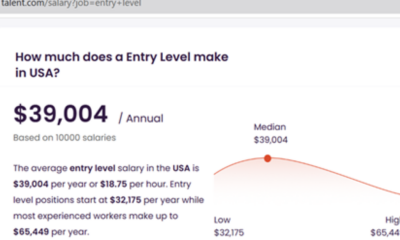2024 brought a variety of ups and downs to the U.S. stock market, job market, and individuals’ pocketbooks and financial plans.
The year started with volatility driven by inflation, interest rate adjustments by the Federal Reserve, economic uncertainty, and geopolitical issues. Yet the second half of 2024 has seen some stabilization as inflation receded and the Federal Reserve started to signal a pause in interest rate increases.
However, what does not change is that we need to help our clients navigate their taxes and provide guidance for their financial future amidst the backdrop of uncertainty.
As we approach 2025, now is an important time to sit down with clients to review their goals and do specific year-end planning to help them keep more of what they earn. We have put together a helpful guide to have productive conversations with clients about maximizing retirement contributions, considering tax-smart investment strategies to reduce their tax burden and more.
Maximizing retirement contributions
Whether it is a 401(k) or a SIMPLE IRA, workplace retirement plans are a great option for clients to reduce their taxable income and save more of what they earn for their retirement. You should highly encourage your clients to participate in the employer-offered retirement plan.
If the employer offers a retirement contribution match, clients should try to at least contribute enough to receive the full match. To harness the most tax-efficient elements of the plan, clients should max out the retirement plan, which reduces their overall taxable income. The 401(k)-employee contribution limit in 2024 is $23,000, but those 50 and older can contribute up to $30,500. The employee contribution limit for a SIMPLE IRA in 2024 is $16,000.
Tax-smart investment strategies
End-of-year financial reviews should provide an outline of the gains and losses in your clients’ portfolios. This may identify opportunities for tax-loss harvesting. Tax-loss harvesting is when capital losses from one investment are used to offset taxes owed on capital gains from another investment or personal income.
There are restrictions on the amount you can deduct from personal income taxes due to tax-loss harvesting; however, this could be something to consider if a client navigated several capital losses this year.
Understanding their tax bracket
Work with your clients so they understand where they fall in their tax bracket to determine the most ideal strategies for them. For example, if your client is on the cusp of a higher tax bracket, are there tax-smart strategies that they should consider to stay below that higher tax bracket?
Questions to ask your clients:
- Are they planning to sell an asset that would be subject to a capital gains tax? These are taxes that a client could pay on profits made from the sales of an asset like real estate or stock. If your client owned an asset for less than a year, they may owe a short-term capital gains tax depending on their tax rate. If this is the case, you can recommend that they hold onto the asset for longer to reduce their tax burden. On the other hand, if they owned something for more than a year, they may owe a long-term capital gains tax. You might consider investigating tax-loss harvesting opportunities.
- Are they invested in their employer’s health savings account or flexible spending account? These accounts set aside money from a client’s paycheck prior to taxes, which will lower their taxable income.
- Are there opportunities to defer a payment or a payout from a sale of an asset, collection of severance or other incoming money? If your client was laid off and is collecting a severance or sold a large asset of value (real estate, stocks, etc.), that income amount might push them into a higher tax bracket. It would be beneficial to decide now if they should split those payments between two years if it would lower the overall tax burden.
- Do they expect to have income from investments? If so, they might be liable for a 3.8% net investment income tax on the lesser of their net investment income. Net investment income includes, but is not limited to interest, dividends, capital gains, rental and royalty income, and non-qualified annuities.
Consider opportunities to give back
This is a great time of year to discuss with clients causes that are important to them and if they want to provide a monetary contribution — whether financial, stocks, or a high-value item for donation. Open conversations about donations can uncover opportunities that may be eligible for a federal tax deduction. If your client is interested in donating directly to a charity of their choice in a donor-advised fund, it will only be deductible if they itemize and exceed the standard deduction.
If your client is interested in donating directly to a charity, they may consider a qualified charitable distribution. This is a tax-free transfer of money from an IRA to a charity. Normally, a traditional IRA distribution is taxable; however, a QCD is tax-free as long as it is transferred directly to a charity. This option is available for individuals over 70½ years of age or older. The maximum amount that can be transferred through a QCD is $100,000. A QCD can provide several tax benefits. QCD can count toward required minimum distributions of a client’s IRA, therefore, reducing their taxable income.
A donor-advised fund is a charitable investment account focused on supporting charitable organizations your clients care about. If your client contributes either cash or other assets to a DAF, they could take an immediate tax deduction. Keep in mind that some clients may want to start their own charitable fund, or support a 501(c)(3) organization’s DAF. In addition, as they decide on what organizations to support, those funds can grow tax-free and benefit the charitable organizations in the future.
Start conversations about the TCJA sunset
The 2017 Tax Cuts and Jobs Act instituted significant Tax Code changes that reduced taxes for many individual investors; however, these tax cuts are only temporary. The TCJA is set to expire at the end of 2025 unless Congress decides to take action.
Your clients may have seen tax cuts due to the TCJA and if they have, it will behoove you to have transparent conversations with them about how to navigate the TCJA expiring in 2025 and the potential tax increases they could see.
The most significant tax cuts in the TCJA included:
- Federal individual income tax rates generally decreased;
- Many itemized deductions were capped or disallowed;
- The standard deduction doubled;
- Changes to the Alternative Minimum Tax rules decreased the number of individual taxpayers subject to the AMT;
- The gift and estate tax exemption doubled; and,
- The qualified business income deduction was introduced.
Although how Congress will address the TCJA sunsetting in 2025 is unknown, it is critical for you to understand how the TCJA impacted your clients to help them determine how they will or will not be affected. As you have conversations with clients during year-end planning, here are areas to consider:
- Income tax planning: Take a look at your clients’ federal income tax rates now compared to 2017 and see if they were higher. Then review the AMT and check to see if your clients may qualify for that under pre-TCJA rules. Understanding if your clients will have a higher income tax or be subject to the AMT under pre-TCJA rules is important for them to know ahead of time and discuss potential income deferral strategies — especially for retirees who are navigating distributions or Roth conversions.
- Standard deduction: If your clients currently claim the standard deduction under TCJA, but they used to itemize, you may start flagging for them that they should consider itemizing for 2026 and the best ways to do that.
- Gift and estate planning: Currently, the enhanced gift and estate tax exemption is $13.61 million, but this will be cut in half after 2025 if the TCJA expires. You should have open discussions with your high-net-worth clients if they are considering making large gifts and if they want to use this exemption. Keep in mind, many wealth transfer strategies like the creation of trusts or real estate transfers require time to fully implement. If you have these conversations with clients now, they’ll be able to stay in front of potential changes and hopefully avoid any delays.
Help your clients keep more of what they earn
Having transparent and open year-end financial planning conversations now with your clients will help them get a head start on the coming year, identify goals, and determine the right strategies for their unique situation. It will also give you more opportunities to collaborate with financial advisors, estate attorneys, and other professionals to navigate the more complicated issues.


 Accounting5 days ago
Accounting5 days ago
 Economics1 week ago
Economics1 week ago
 Finance1 week ago
Finance1 week ago
 Personal Finance1 week ago
Personal Finance1 week ago
 Accounting1 week ago
Accounting1 week ago
 Accounting7 days ago
Accounting7 days ago
 Accounting1 week ago
Accounting1 week ago
 Economics1 week ago
Economics1 week ago










